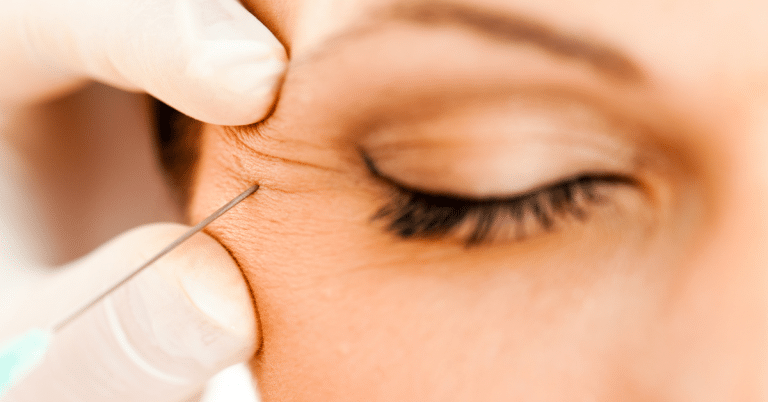
PRF Eye Refresh: A Natural Solution for Under-Eye Rejuvenation
The under-eye area is one of the first places to show signs of aging. Fine lines, hollowness, and dark circles can make the face look tired even when you feel

Botox has gained widespread recognition in the realm of aesthetic treatments. People widely use it to reduce wrinkles and fine lines, giving them a refreshed and younger look. But what exactly is Botox and how does it work?
Short for botulinum toxin, Botox, is a neurotoxic protein produced by the bacterium Clostridium botulinum. When injected into the muscles, it blocks the nerve signals that cause muscle contractions. This results in a temporary relaxation of the muscles, which in turn reduces the appearance of wrinkles. It is most commonly used to treat frown lines, crow’s feet, and forehead lines.
Botox works by targeting the muscles responsible for wrinkles and temporarily paralyzing them. The procedure involves injecting small amounts of Botox into specific facial muscles using a fine needle. The effects usually stay for 3-6 months. Then, the muscles slowly regain movement and wrinkles come back.
Note that this is a prescription medication and only a qualified healthcare professional should administer it. The dosage and injection technique are crucial to achieving the desired results without any complications.
There are many myths surrounding Botox, which can often lead to confusion and misconceptions. Let’s take a look at some of the most common myths and separate fact from fiction.
The idea that lying down after Botox is bad has caused worry and confusion among patients for a long time. The truth is that lying down has no impact on the distribution of the toxin in the body.
When injected, Botox remains in the muscles and does not move to other parts of the face or body. The healthcare professional carefully chooses the injection sites to target specific muscles responsible for wrinkles. Botox stops nerve signals to muscles, making them relax and reducing wrinkles.
Lying down after your treatment will not cause the toxin to travel to other areas of the face. It is perfectly safe to resume your normal activities, including sitting, standing, or even exercising, immediately after the procedure. You can lie down and relax if you want, but it won’t affect how well Botox works.
Exercise is an important part of a healthy lifestyle, and getting Botox should not hinder your ability to stay active. Contrary to popular belief, there is no need to avoid exercise after getting Botox.
The fear that exercising after Botox can cause the toxin to migrate to other areas of the face is unfounded. Botox remains localized at the injection site and does not travel to other parts of the body. You can resume your regular exercise routine within 24 hours after the procedure. However, it is important to avoid any strenuous activities immediately.
It is worth noting that everyone’s body is different, and individual responses to Botox may vary. If you have any concerns or questions about exercising after Botox, it is always best to consult with your healthcare provider. They can provide personalized advice based on your specific circumstances.
Before considering Botox, it is important to be well-informed about the procedure and its effects. Here are some essential facts you should know:
Choosing the right provider is crucial for a safe and successful procedure. Here are some tips to help you find a reputable provider:
While Botox is a popular choice for reducing the appearance of wrinkles, it is not the only option available. Here are some alternative treatments to consider:
Consult a healthcare professional to find the best treatment for your needs and goals.
Botox can be beneficial for individuals of different age groups, targeting specific concerns and areas of the face. We will provide a breakdown of how different age groups can use Botox.
Botox has revolutionized the field of cosmetic procedures, offering a safe and effective solution for reducing the appearance of wrinkles. It is important to know the facts about Botox so you can make smart choices about your cosmetic journey. When considering any cosmetic procedure, it is crucial to consult with a reputable provider who prioritizes your safety and well-being.
Glamor medical can answer your questions about Botox and guide you through the process, ensuring a positive and satisfying experience. So, take that first step towards a more rejuvenated and confident you and contact us today.

The under-eye area is one of the first places to show signs of aging. Fine lines, hollowness, and dark circles can make the face look tired even when you feel

When it comes to body contouring, not every effective treatment requires machines or needles. At Glamor Medical, we’re introducing a natural yet powerful approach that’s been gaining global popularity: Mold

Summer in South Florida is full of sunshine and outdoor activities, but the skin often pays the price. After months of exposure, many patients notice brown spots, redness, fine lines,